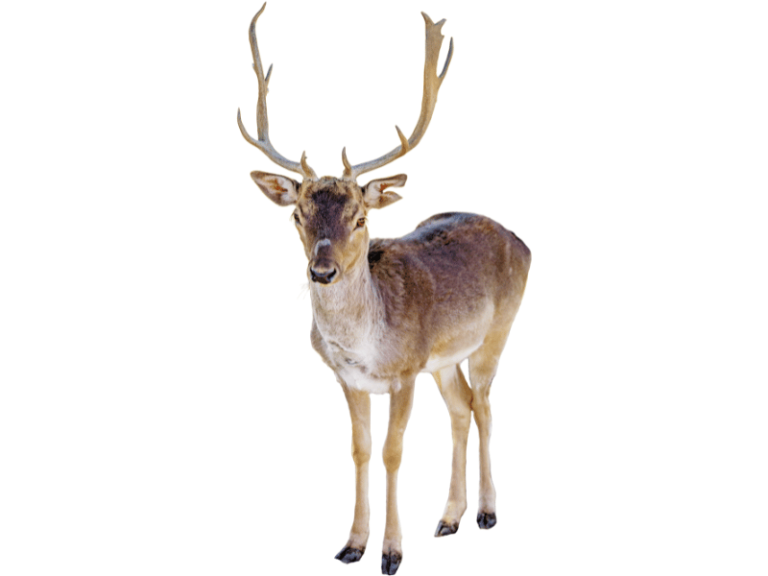Deer are relatively prosperous even-toed ungulates, with over 40 species worldwide. Except for a very few species, generally, male deer have antlers, while female deer do not. Moreover, the shape and structure of deer antlers are completely different from those of cattle and sheep. Deer antlers are not only aesthetically pleasing and multi-branched, but they are also solid. Additionally, unlike cattle and sheep, which grow their horns only once in their lifetime, deer shed their antlers and grow new ones each year. The development of new antlers goes through two stages. In the initial stage, the antlers are soft and rich in blood vessels, known as the “velvet stage.” In the later stage, after calcification, they become particularly hard.
Deer are love-peace animals. They rarely fight with other species. When faced with enemies, their only strategy is to “run away.” They can run very fast, so they do not need weapons. The fact that female deer do not have antlers fully illustrates this point.
So, why do male deer grow antlers?
There is a behavior in deer herds where mating is not entirely free. Male deer exhibit a unique dominance. Their mating season is generally in late autumn and early winter, which is when the male deer’s antlers have just hardened. During this time, male deer use the quiet moments of dawn to run to higher ground and emit mating calls. Unmated female deer will come to the call. Once a female deer is taken in by a male, she is not allowed to move freely until the mating period ends. During this period, the male deer leads the female herd around. When encountering another mating group, two male deer will immediately engage in a fierce battle. Once a winner is determined, the victor takes over the defeated male’s herd of females. Stronger male deer often dominate several dozen females. Therefore, antlers are the only weapon male deer use to fight each other.

